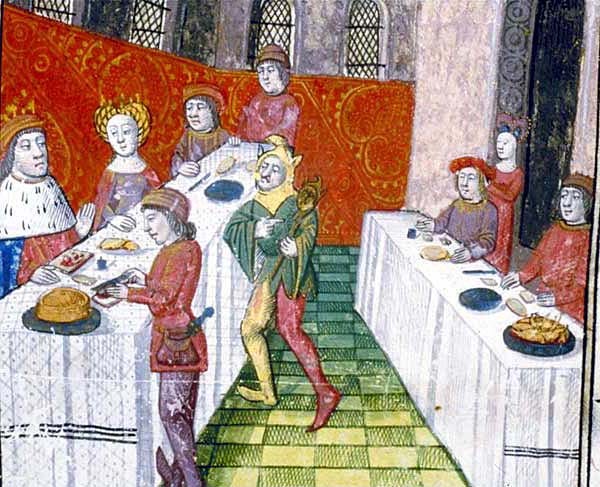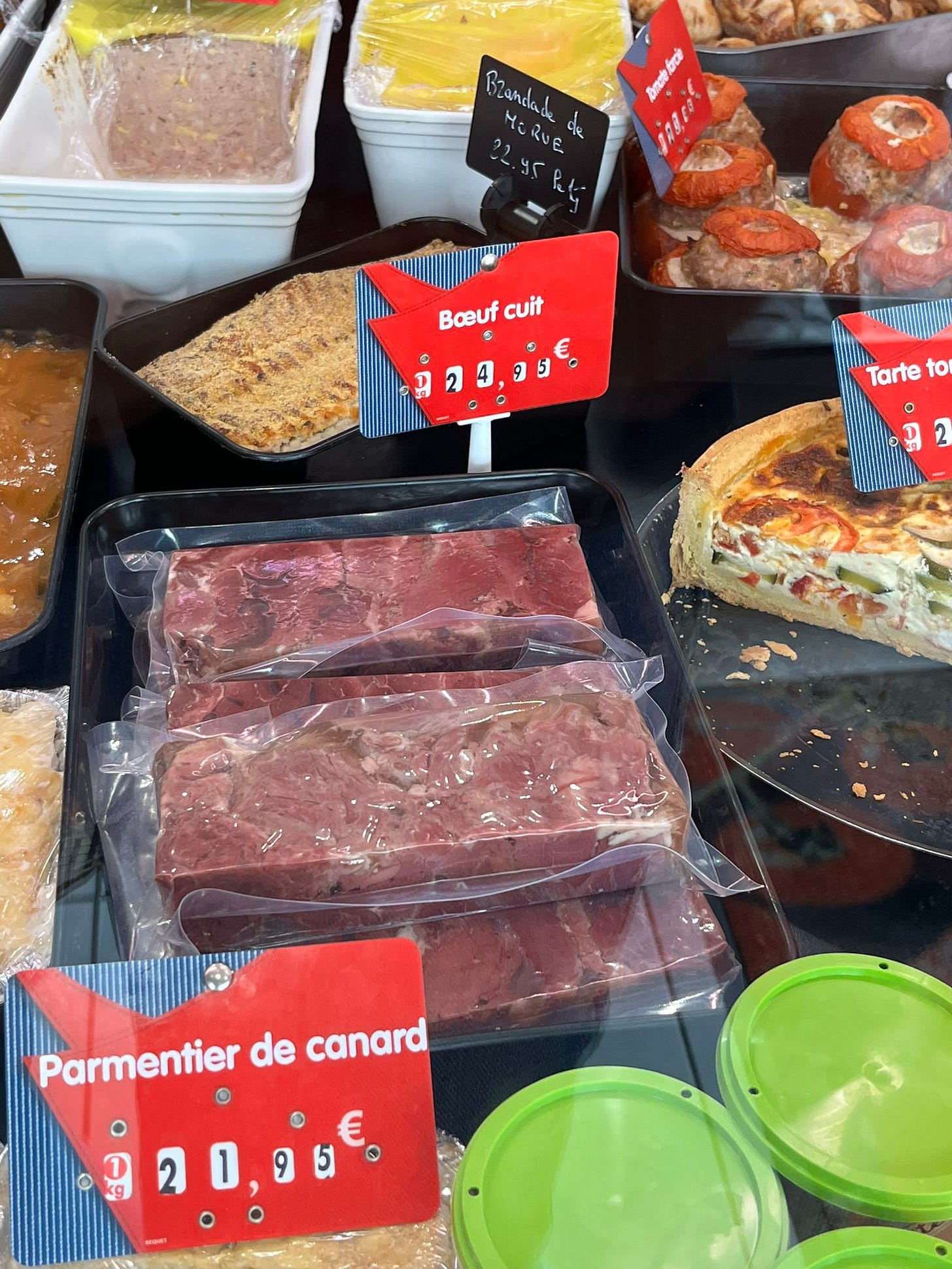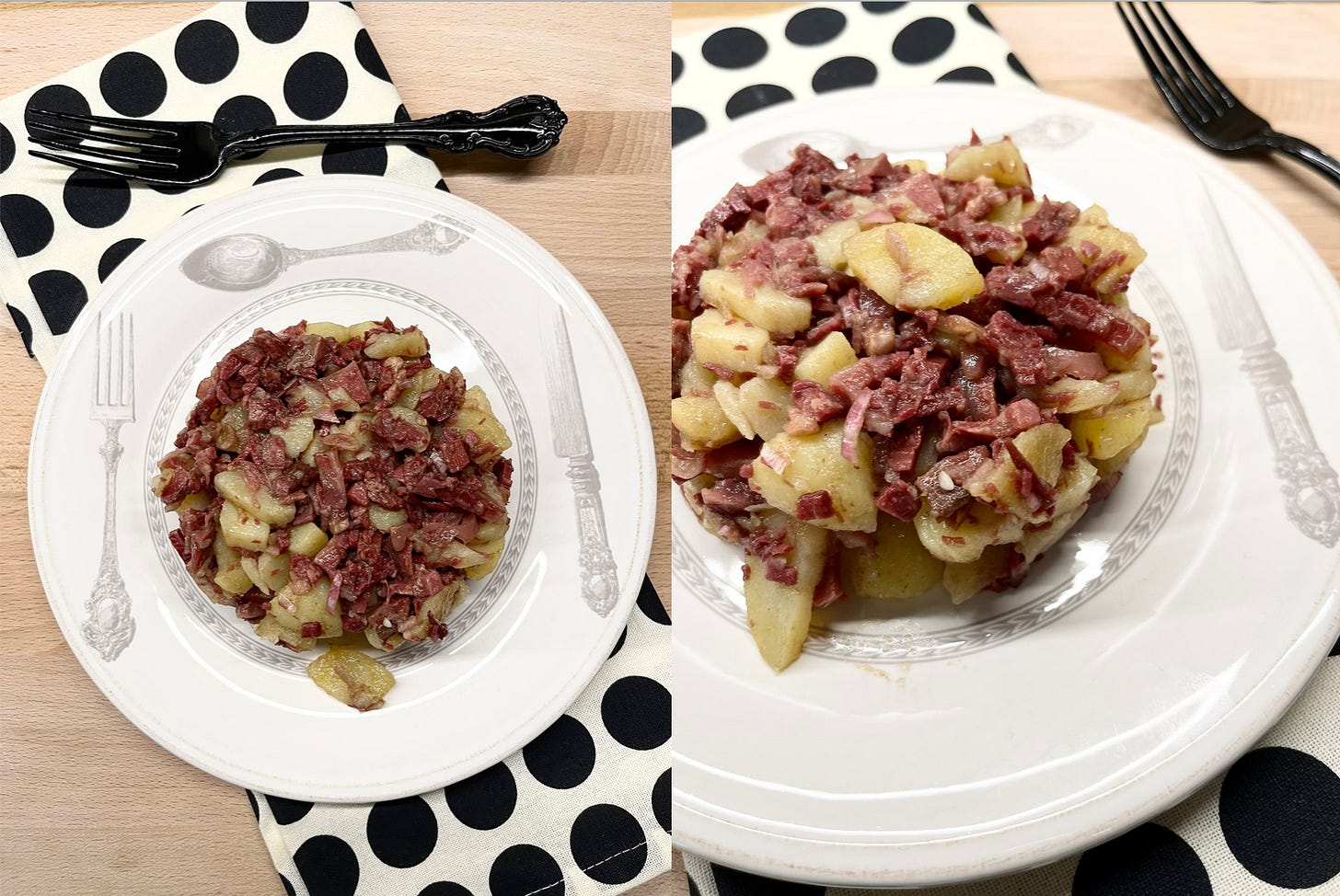We’re having a much better breakfast than at the Custer Hotel with a can of corned beef and another of Douarnenez sardines. - Édmond de Mandat-Grancey, In the Rocky Mountains, 1884
Pâtés and terrines. You’ve seen a selection of pâtés and terrines in every butcher’s or charcutier’s shop or market stall in France, standard fare for hors d'oeuvres, appetizer, first course, or picnic. All you need to accompany one of these culinary delights is a jug of wine, a loaf of bread, and thou…or, better yet, a jar of crisp, vinegary cornichons.
But I bet you didn’t notice the bœuf cuit.
A pâté is a mix of chopped or ground meat or meats and offal, often the liver included, and animal fat, sometimes seasoned with herbs, spices, alcohol, and even dried fruits or mushrooms, pressed together into a mold and cooked, most commonly in a bain-marie or water bath. Pâté is sometimes wrapped in a dough before cooking, creating a delicious pâté en croûte, the croûte or crust eaten with the pâté filling. A terrine is similar, although offering a wider variety of possibilities and recipes; terrines are made from meat, fish, chicken, seafood, or just a variety of vegetables, often placed into a heavier, shallower dish for a longer, slower cooking, usually in an oven for meats, sometimes in a bain-marie for more delicate ingredients.
Pâtés and terrines, one can presume, were a way to prepare meats to make them easier to eat, more tender and flavorful, as well as a way to preserve them for a longer time, especially for travel. Preparing a pâté en croûte, in fact, was simply a way to protect and preserve a pâté by cooking it in a hard crust that wasn’t edible at all, the hard crust also serving as a way to pick up and eat the pâté more easily, a cross between a plate and a utensil; it was only much later that pastry chefs decided to wrap the filling in a delicate and edible crust. In fact, pâté comes from the word pâte, from the 12th century terminology for “a pastry that contains and encloses meat or fish.”
Pâtés are as old as the Roman Empire, but it had to wait for the Middle Ages to be considered a dish unto itself, chefs creating a wide variety of variations. The first written recipe for a pâté in France was in the Livre des Détails de La Chasse, The Book of Hunting Details by Gace de la Bigne, chaplain to Kings Philippe V, Jean II, and Charles V, written sometime between 1360 and 1377 (a pâté en croûte made with 3 partridges, 6 fat quails, and 12 larks). Pâté was quite popular in France during the Middle Ages, both on noble and aristocratic tables and on the tables of more humble Parisians.
But what about that bœuf cuit?
Unlike both a pâté and a terrine, bœuf cuit - also known as bœuf pressé, “pressed beef” or “cooked beef”, is only beef, not a blend of cuts, offal, and fat. A large piece of well-marbled beef, often the brisket, is brined for several days. When the meat is ready, it is rinsed abundantly, cut into chunks, then cooked in seasoned water with - usually - leeks and carrots for flavor. The cooked meat is drained and compacted together into a pressé or meat press and chilled, taking the form of the mold or press. The beef is then unmolded and brushed all over with an aspic or gelatin blended with caramel and red carmin (a dark red coloring from an insect extract).
Bœuf pressé, bœuf cuit, bœuf à mi-sel, or bœuf demi-sel, the sel or salt referring to the brine in which the beef is cooked, is, or was, also known in France as “corned beef”, accent on the -ed of the corned. While the name corned beef, the preparation of beef for long conservation, often for traveling, appeared in English in the middle of the 16th century, “corn’d-beef” appeared in French in 1716 in François Massialot’s Le Cuisinier royal et bourgeois. And it had absolutely nothing to do with corn. “Corned” was in reference to the beef being seasoned with grains of salt - “corn” being a grain of something, here grains of salt - a common way to preserve meat. Brillat Savarin also wrote about a “superb piece of corn’d beef (bœuf à mi-sel)” and a “stew’d” goose he was served at the “abundantly served table” of a “venerable American farmer” in Hartford, Connecticut after a walk on a beautiful October day in 1794. After having proudly shot a wild turkey and admired four “buxum lasses”, another farmer’s daughters.
Frenchman Nicolas Appert, inventor of sterilization by heat in 1795 and the first to develop a method for conserving food in airtight, sterile glass and metal containers (inspired by the urgent need to properly feed French soldiers), was most likely the first person to can pressed beef. In 1824, he won a prize from the Société d'Encouragement pour l'industrie Nationale for a 17 kg can of pressed beef. Wow. That’s just over 37 pounds of beef in a can.
The word "corned" might by this time refer to the “corns” or grains of potassium nitrate, also known as saltpeter, which were at this time used to preserve the meat. The first cans of corned‑beef were commercialized in the United States starting in 1870. Industrial canned “Compressed Cooked Corned Beef” came out in 1881 from factories in Uruguay and sold worldwide by the French company Liebig.
Today, in France, tender and flavorful preserved beef is sold in butcher shops as bœuf cuit or bœuf pressé alongside the other and more familiar pâtés and terrines. It definitely seems to be more of a summer specialty, because, unlike pâtés and terrines which are eaten year round quite simply with bread, bœuf cuit is sliced and cubed and used to prepare salads, such as one might use precooked chicken or canned tuna.
No specific recipe today, because all you need for a salade de bœuf cuit is the beef sliced or cubed, tender cooked potatoes still warm, lots of thinly sliced shallots, and a good vinegary vinaigrette. If you like, add capers, chopped olives, or chopped cornichons. You can serve this atop salad greens or slices of ripe summer tomatoes. Classic.
Thank you for subscribing to my Substack, Life’s a Feast by Jamie Schler, where I share my recipes, mostly French traditional recipes, with their amusing origins and history. I’m so glad that you’re here. You can support my work by sharing the link to my Substack with your friends, family, and your social media followers. If you would like to see my other book projects in the making, read my other essays, and participate in the discussions, please upgrade to a paid subscription.








So Brillat-Savarin was a breast man! I am always learning from you, Jamie.
Also, I very much miss that butcher shop.
Damn! I just ate and now I'm hungry again.
Since I hate the prepackaged corned beef available in in U.S. stores, I've always made my own corned beef. Bœuf cuit looks like something I'm going to have to learn to do.
Thank you. Fun.